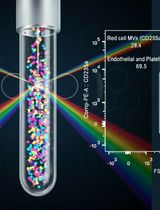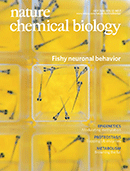- EN - English
- CN - 中文
Generation of a Cellular Reporter for Functional BRD4 Inhibition
BRD4抑制功能细胞报告基因的生成
发布: 2017年07月05日第7卷第13期 DOI: 10.21769/BioProtoc.2368 浏览次数: 7113
评审: Yanjie LiAnonymous reviewer(s)

相关实验方案

外周血中细胞外囊泡的分离与分析方法:红细胞、内皮细胞及血小板来源的细胞外囊泡
Bhawani Yasassri Alvitigala [...] Lallindra Viranjan Gooneratne
2025年11月05日 1325 阅读
Abstract
The ubiquitously expressed bromodomain-containing protein 4 (BRD4) is an epigenetic reader, which recruits transcriptional regulatory complexes to acetylated chromatin. Because of its role in enhancing proliferation, BRD4 has become a therapeutic target in oncology, as the inhibition of this protein leads to the reduction of the growth of many tumours. Even though BRD4 is more and more studied, its mechanism of action has not been fully described yet. Therefore, we aimed at generating a cellular reporter system to monitor BRD4 inhibition. Such reporter can be potentially used in high throughput chemical and genetic screenings, in order to uncover new possible BRD4 functional pathways. The deeper understanding of the mechanism of action of BRD4 activity will certainly help in developing new therapy strategies for those cancers so called BRD4-dependent.
Keywords: Cellular chromatin reporters (细胞染色质报告基因)Background
Research in the epigenetic field has recently highlighted the central role of BRD4 in cancer progression. BRD4 is an acetyl-lysine reader of the BET (bromodomain and extraterminal domain) family (Dey et al., 2003; Filippakopoulos et al., 2012; Wang et al., 2012) able to bind to acetylated histones at promoter and enhancer regions (Dey et al., 2003; Filippakopoulos et al., 2012; Nagarajan et al., 2014). The mechanism of action of this epigenetic reader consists in the activation of gene promoters and enhancers by recruiting several transcription factors, cofactors and RNA polymerase II (RNApol II), which results in modulating, mostly enhancing, the transcription of certain target genes. The BRD4-histone module has been described to play a key role regulating cell cycle progression (Dey et al., 2003; Wu and Chiang, 2007; Yang et al., 2008; Devaiah and Singer, 2013) and genomic structure and stability (Wu and Chiang, 2007; Floyd et al., 2013); for those reasons, BRD4 has frequently been associated with cancer development and progression (Yang et al., 2008; Zuber et al., 2011; Nagarajan et al., 2014; Wu et al., 2015).
Chromatin reporter cell lines have been already developed in order to identify modulators of position effect variegation (Tchasovnikarova et al., 2015) or to discover new chromatin-targeting compound (Johnson et al., 2008; Best et al., 2011; Wang et al., 2013). In contrast to previous approaches, we wanted to develop a protocol for the generation of a reporter cell line able to monitor the BRD4-dependent heterochromatization of a generic reporter. To achieve that, we used a common retroviral vector carrying an RFP (Red Fluorescent Protein) gene, and selected clones that integrated it in fully repressed genomic regions specifically reactivated by BRD4 inhibition. The haploid nature of the cell line used (KBM7 [Andersson et al., 1995]), makes the reporter easily amenable not only to chemical screens, but also to genetic screens. Both methods can be used for the identification of new BRD4 direct and functional partners, and results from these approaches will provide further insights into BRD4 biology.
Materials and Reagents
- Pipette tips
- 6-well plates, tissue culture treated (Corning, Costar®, catalog number: 3506 )
- 15 ml Falcon® conical centrifuge tube (Corning, Falcon®, catalog number: 352196 )
- 0.45 μm syringe filters (VWR, catalog number: 514-8021 )
- 24-well plates, tissue culture treated (STARLAB INTERNATIONAL, catalog number: CC7682-7524 )
- 96-well plates, tissue culture treated (Corning, catalog number: 3598 )
- Viewplate-96 black, optically clear bottom, tissue culture treated, sterile, 96-Well with lid (PerkinElmer, catalog number: 6005182 )
- 10 cm plates, tissue culture treated (Corning, catalog number: 430167 )
- 293T cell line (ATCC, catalog number: CRL-3216 )
- KBM7 cell line (Chronic Myeloid Leukaemia) (Horizon Discovery, catalog number: C628 )
- Fluorescent reporter vector (LZRS-RFP-ires-ZEO retroviral vector, a gift from S. Nijman Lab, Ludwig Cancer Research, Oxford)
- Packaging vector (e.g., pCMV-Gag-Pol retroviral vector, Addgene, catalog number: 14887 ; pCMV-VSV-G envelope vector, Addgene, catalog number: 8454 )
- DMEM media (Thermo Fisher Scientific, GibcoTM, catalog number: 41965039 )
- Fetal bovine serum (FBS) (Thermo Fisher Scientific, GibcoTM, catalog number: 10500064 )
- Lipofectamine 2000 (Thermo Fisher Scientific, InvitrogenTM, catalog number: 11668019 )
- Opti-MEM
- IMDM media (Thermo Fisher Scientific, GibcoTM, catalog number: 21980032 )
- Phosphate-buffered saline (PBS) (Thermo Fisher Scientific, GibcoTM, catalog number: 14190094 )
- (S)-JQ1 (MedChemExpress, catalog number: HY-13030 )
- Dimethyl sulfoxide (DMSO) (Sigma-Aldrich, catalog number: D8418 )
Equipment
- Pipettes (Gilson)
- Cell culture centrifuge (Sigma Laborzentrifugen, model: 3-18K , catalog number: 10290)
- FACS (BD, BD Bioscience, model: BD FACSCALIBUR )
- FACS sorter (BD, BD Biosciences, model: BD FACSAria )
- Fluorescence microscope (PerkinElmer, model: HH12000000 )
- Cell culture hood (Thermo Fisher Scientific, model: HerasafeTM KS , catalog number: 51022515)
- Cell culture incubator (Eppendorf, model: Galaxy® 170 R , catalog number: CO170R-230-1000)
Procedure
文章信息
版权信息
© 2017 The Authors; exclusive licensee Bio-protocol LLC.
如何引用
Sdelci, S. and Kubicek, S. (2017). Generation of a Cellular Reporter for Functional BRD4 Inhibition. Bio-protocol 7(13): e2368. DOI: 10.21769/BioProtoc.2368.
分类
癌症生物学 > 癌症生物化学 > 蛋白质
细胞生物学 > 基于细胞的分析方法 > 流式细胞术
您对这篇实验方法有问题吗?
在此处发布您的问题,我们将邀请本文作者来回答。同时,我们会将您的问题发布到Bio-protocol Exchange,以便寻求社区成员的帮助。
Share
Bluesky
X
Copy link











